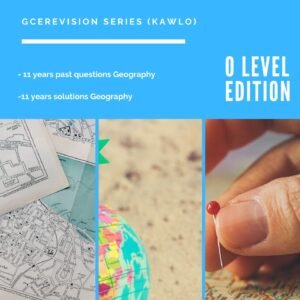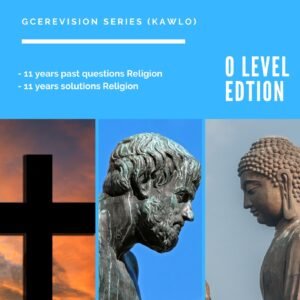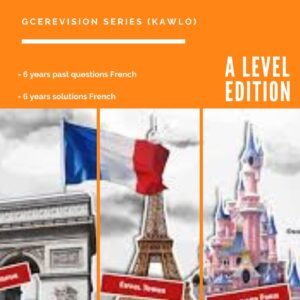Advanced level 2024 CASPA mock history 1
Advanced level 2024 CASPA mock history 1
1. The 19th century migration of the following pairs of
ethnic groups could be attributed to cultural affinities,
except:
A. Douala/Bakweri
B. Bamileke/Bamum
C. Mbo/Babossi
D. Bayang/Ekoi
2. A major difference in the succession pattern of the Kom
and Bakweri societies during the 19th century was:
A. The Kom was a centralized state while Bakweri was
decentralized
B. The kom practiced only matrilineal succession while the
Bakweri practiced only patrilineal succession
C. In the Kom Fondom, succession was hereditary while it
was unpredictable in the Bakweri society
D. The Kom practiced both matrilineal and patrilineal
succession while the Bakweri practiced only matrilineal
succession
3. The non-religious ramification of the 19th century jihads
in north Cameroon was that:
A. Islamic religion was revived
B. Islamic literacy was promoted
C. Islam was spread
D. The Malikite Code was implemented
4. The advent of early European missionary bodies along
the coast of Cameroon in the 19th century could be
attributed to the following justifications, except:
A. The desire to translate the Bible to European languages
B. The desire to eradicate obnoxious habits
C. The desire to introduce novel economic ventures
D. The desire to foster colonial aspirations
5. Which of the following was not a reason for the German
ability to outsmart the British during the scramble for
Cameroon:
A. Bismarck’s intrigues
B. Total support to German annexation by Douala chiefs
C. French activities engrossed British focus
D. The Germans were more pragmatic in negotiations
6. Which of the following pair of German colonial
Governors were associated with the suppression of
forced labour and the transfer of Victoria to the Germans?
A. Von Zimmerer and Otto Gleim
B. Otto Gleim and Von Puttkammer
C. Theodore Seitz and Von Soden
D. Karl Ebermaier and Theodore Seitz
7. German colonial rule was a mixed blessing to the
Cameroonians because:
A. The Germans introduced modern architecture, and used
punitive expeditions
B. The Germans promoted education, and granted
scholarships
C. The German opened plantations, and employed
Cameroonians
D. Germans expropriated native lands, and promoted forced
labour
8. The following were political and social repercussions of
the First World War on Cameroon respectively:
A. Territorial loss and homelessness
B. Human loss and destruction of properties
C. Mass migration and Partition
D. End of rule and unemployment
9. An evidence to castigate the view that the British
completely neglected the socio-economic development
of Southern Cameroon during the mandate era was:
A. Former German plantations were sold to the Germans
B. Only seasonal roads were constructed
C. Health centers were opened in the administrative
Divisions
D. Railway lines were constructed
10. The French colonial policies of Mise-en-Valeur and
Prestation were implemented in other to foster;
A. Economic gains and land expropriation
B. French values and ten days compulsory labour
C. Cash crop cultivation and imprisonment without trial
D. Economic exploitation and forced labour
11. The following were important stages in the
decolonization process of French Cameroon during the
Trusteeship era, except :
A. The granting of internal autonomy
B. The May 1957 elections
C. Ahidjo’s conditional amnesty to UPCist
D. The creation of the BDC
12. An important outcome of the UPC uprising of 1955 was
that:
A. It instigated the promulgation of the Loi Cadre
B. It led to the banning of the part by Roland Pre
C. It led to the rise and fall of Andre Marie Mbida
D. It encouraged the creation of anti-French political parties
Question 13 is based on the following were events associated
with constitutional developments in British Southern
Cameroon prior to independence;
1. Introduction of a ministerial system
2. The Eastern Regional Crisis
3. Two Native Authority seats were allocated for Southern
Cameroon
4. Creation of a Southern Cameroon House of Assembly
5. PM Kale joined an NCNC protest delegation to London
6. Creation of the pioneer indigenous political parties
13. Which of the following constitutions was associated with
the events numbered 1 and 6?
A. The Clifford constitution of 1922
B. The Richard constitution of 1946
C. The Macpherson constitution of 1951
D. The Lyttleton constitution of 1954
14. Which of the following groups of Southern Cameroonian
leaders opposed the plebiscite questions and opted for a
third alternative question?
A. Chief Nyenty, PM Kale and Chief Jesco Manga Williams
B. PM Kale, Ndeh Ntumazah and Fon Achirimbi
C. PM Kale, Chief Nyenty and JN Foncha
D. Chief Jesco manga Williams, Fon Achirimbi and Fon
Galega II
15. Which of the following was never a feature of the federal
constitution of 1961?
A. The creation of four houses of assembly and three
governments
B. Yaounde was made the federal capital of East Cameroon
and Buea the capital of West Cameroon
C. President and the vice to be elected by universal adult
suffrage
D. Higher education to be the prerogative of the federal
government














